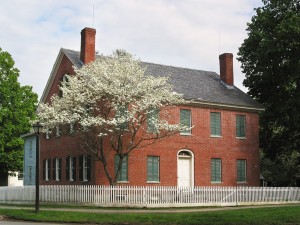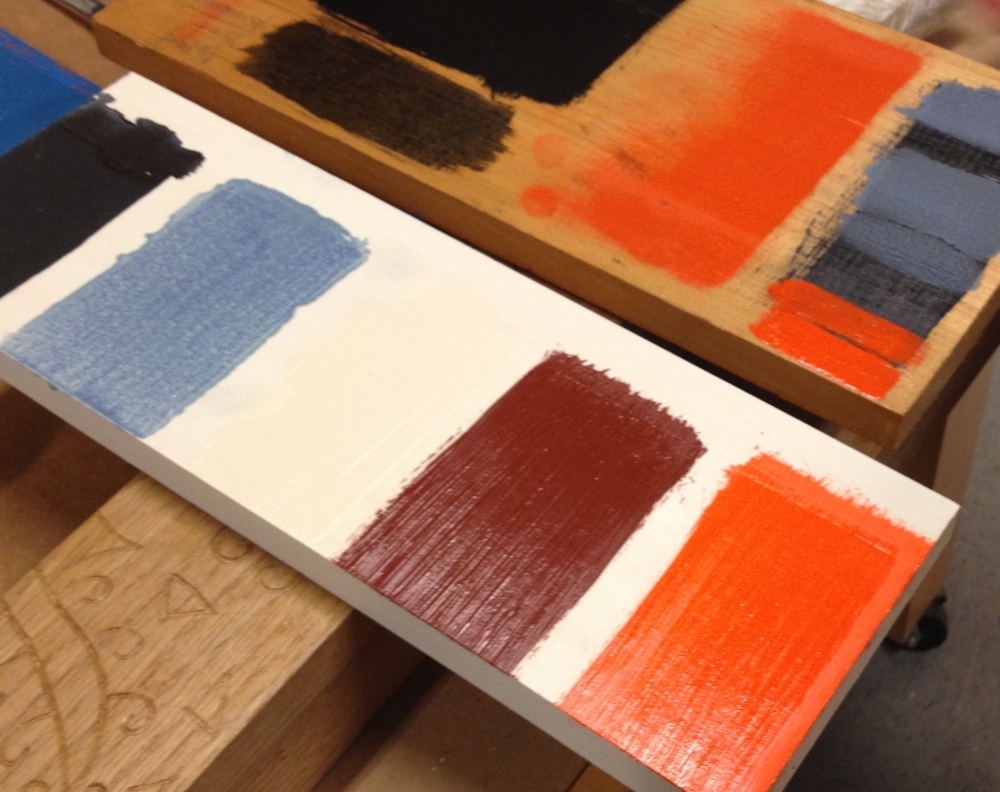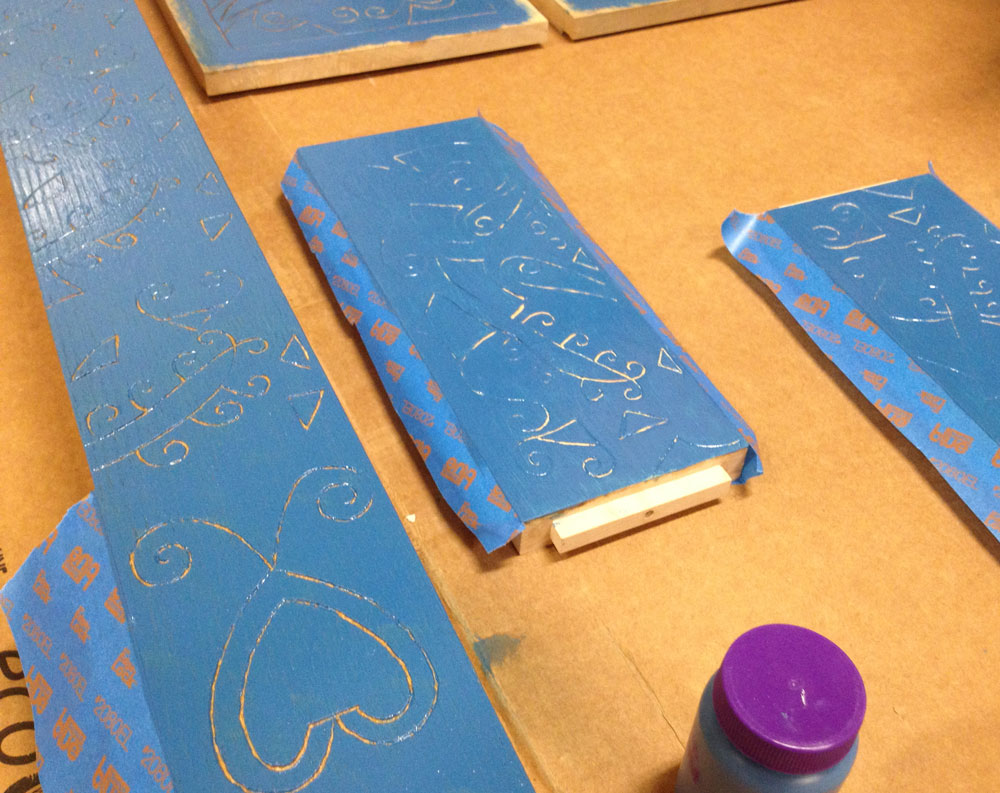Guest post by Joshua W. Lane, Curator of Furniture, Historic Deerfield

The Wright House on Old Main Street at Historic Deerfield will house the exhibition: Furniture Masterworks: Tradition and Innovation in Western Massachusetts
As the calendar sprints full speed ahead to September 28th, the opening day of Historic Deerfield’s exhibition, Furniture Masterworks: Tradition and Innovation in Western Massachusetts, I am busy readying this display of furniture that explores western Massachusetts’ first 150 years of furniture-making. With 58 objects drawn from Historic Deerfield’s collections, the objects in this exhibition exemplify the region’s signature contribution to American design history and the emergence of a national identity. We are pleased to be reopening the Wright House on Old Main Street at Historic Deerfield to host this exhibition.
The furniture of the Connecticut River Valley in western Massachusetts during the 17th, 18th and early 19th centuries reflects a wide variety of tastes and styles, which we hope to show through this exhibition. Furniture in four galleries will be arranged roughly chronologically. One gallery will feature furniture from 1680-1720, two galleries will feature furniture from 1720-1800, and one gallery will display furniture from the neoclassical period, from the 1790s to the 1830s.
Getting an exhibition off the ground is always an endeavor that comes together through the work of many people. I can’t talk about the exhibition without acknowledging several people who have helped realize our vision.
Anna Cressotti, a Bartels Curatorial Intern who stayed on as research assistant for the exhibition, tracked down genealogies and clarified some previous attributions for the exhibition’s objects. To layout the exhibition, Anna and I cut full-size footprints of the objects in brown paper and lined them up on the floors of each room to determine the best configuration, taking into account view lines. We taped string to the floors to outline the shape of platforms that would accommodate as much furniture as possible.
Once we found a place for everything, I turned to carpenter-cabinetmaker, James Campbell, to construct the platforms. Retrofitting an old house, with a host of unique challenges, into a gallery is no small feat. Existing platforms in the Wright House, previously used to display furniture, didn’t conform to the furniture for this exhibition, so we dismantled them. Jim devised an ingenious system for building new platforms that accommodate the uneven floors, which, in some places, dip by 2-3 inches. Jim prefabricated frames in his shop and leveled them with brackets that he cut from extruded aluminum and tapped to fit adjustable screw-type feet. In addition to the platforms, Jim is creating vertical frameworks to cover or “shut out” the rest of the house, so to speak. Removable vertical panels will fit over windows and mantels in order to keep the focus on the furniture.

Carpenter-cabinetmaker, James Campbell constructed platforms to help transform the historic home into exhibit space.
Each room will contain 12-14 objects. Bob Riddle, a museum preparator who works for Mount Holyoke College and who has helped us with exhibitions in the past, will retrofit the closets at the Wright House as display niches to add a “layered” look to the show. He will also build risers for the objects.
To help save on energy costs, we are fitting existing lighting tracks with low energy LED lights. LED lights emit a certain color output, necessitating the coordination of paint colors and textiles that will be used as backgrounds for the objects. Painter David Noonan painted the gallery walls using colors tested with these LED lights.
One of the many interesting aspects of the exhibition for visitors will be the display of two early painted chests with drawers– one with the carved initials “HD,” c.1720, and one painted with the initials “KK,” c.1724– each of which has undergone pigment analysis by Susan Buck, a conservator and paint analyst from Williamsburg, VA. Jim Campbell will reproduce full-scale models of both chests’ facades, which will be painted in their original color schemes based on information from Susan’s analysis.

Conservators Susan Buck and Erika Sanchez Goodwillie helped develop the paint for the reproduction facades.

Curator Joshua Lane painted the components of the reproduction facades and James Campbell did the carving.
The late 19th-century paint on the “HD” chest has nothing to do with its original colors. Evidence of a first layer of Prussian blue paint, applied when the chest was being built, is visible on the edges of panels that have, over the centuries, pulled away from the frame– a really exciting discovery! Other colors that were used on this chest include intensely bright orange and clear varnish. The model of the KK chest façade will demonstrate an equally brilliant color scheme utilizing black, white, bright orange, dark red and blue-gray paint. The models will give visitors a good sense of the objects as they originally appeared.
What is especially exciting about this project is that we are using hand-made paints composed of authentic pigments in oil-based media, true to the period. Again, based on Susan’s paint analysis, paint conservator and historic paint maker, Erika Sanchez Goodwillie, has hand-ground pigments including red ochre, red lead, bone black, Prussian blue and smalt—ground blue glass mixed with white lead to create a lustrous soft gray—for this project. We now have accurate representations of Prussian blue, deep red, and bright orange paint that would have been seen on the originals.
Applying the paint to the reproduction chest facades has brought us up a fascinating learning curve. For example, in examining the “HD” chest with Susan Buck, and now painting the model, I came to realize that the chest components were painted before they were joined together and carved. Jim Campbell crafted the model so that it can be disassembled into its component pieces and had started to relief-carve the decoration before I began to paint it. However, I had to tell him to wait until the paint had been applied and cured to begin carving. He will recarve it so that the drop-ground passages of the decoration show through the paint.
Putting together an exhibition of wonderful furniture like this is always a great undertaking requiring the work of many people. This exhibition would not have been possible without their help or without the generosity of Skinner, Inc. I hope you have the opportunity to come and see the outcome of the work we have done for Furniture Masterworks this fall at Historic Deerfield.
This post is part of an ongoing series of articles contributed by curators of exhibitions and events presented as part of the Four Centuries of Massachusetts Furniture collaboration. Read more stories in the series.



